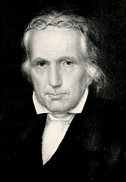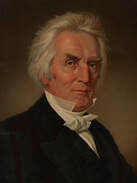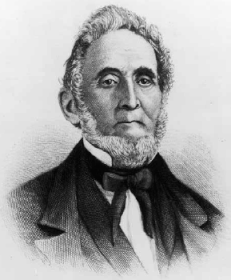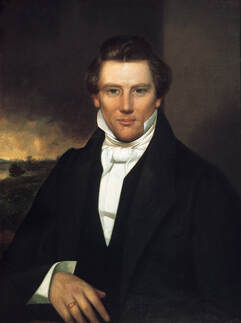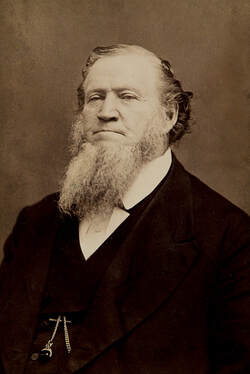|
The Protestant Fathers of the Reformation could protest against institutional Christian corruption. They could reform and improve Christianity. They could publish the scriptures and allow the common man to read the words of Christ, prophets and apostles for the first time. What they could not do is restore again what had been lost. Protestant Reformer John Wesley reflected on one of the results of losing original Christianity. In Wesley’s sermon The More Excellent Way he explained, "The cause of this [decline of spiritual gifts following Constantine] was … `the love of many,' almost of all Christians, so called, was `waxed cold.' The Christians had no more of the Spirit of Christ than the other Heathens. The Son of Man, when he came to examine his Church, could hardly `find faith upon earth.' This was the real cause why the extraordinary gifts of the Holy Ghost were no longer to be found in the Christian Church; because the Christians were turned Heathens again, and had only a dead form left." Once Christianity died, it needed to be reborn. And for that something more than earnest desire was needed. It required God to be directly involved.
Roger Williams similarly concluded that reformation could never return Christianity to its original state and that only God could bring about a Restoration. He declared, “There is no regularly constituted church of Christ on earth, nor any person qualified to administer any church ordinances; nor can there be until new apostles are sent by the Great Head of the Church for whose coming I am seeking.” Many others also agreed a Restoration was needed and stepped forward to Restore the original Primitive Christian Church. Among them were Thomas and Alexander Campbell, father and son. |
|
restoration christiansTHOMAS & ALEXANDER CAMPBELL
Thomas Alexander wanted to completely restore apostolic Christianity and believed Christian Creeds were unnecessary and divisive. The Bible was clear enough that Creeds were unnecessary. His motto was, "Where the Scriptures speak, we speak, where the Scriptures are silent, we are silent." His son, Alexander, observed, “It requires but little reflection to discover that the fiercest disputes about religion, are about what the Bible does not say, rather than about what it does say.” For all other Christian denominations, Catholic and Protestant, however, it was the Creeds of Historic Christianity that defined them as “Christian.” Rejection of the Creeds was revolutionary and unwelcomed. This desire to return to the original apostolic Christianity was “Restorationist” and a move beyond Protestantism. Alexander Campbell intended to follow his father into the Presbyterian ministry, and studied to preach at the University of Glasgow, but became disillusioned with what he regarded as theological pettiness in the religion. By the time he joined his father in America, both father and son had diverged from traditional Christianity and both welcomed the Restoration concept. Both Campbells sought to return to the original, Primitive form of Christianity. Their movement was nicknamed by critics as “Campbellites” and later their ministries resulted in congregations today identified as the Churches of Christ, Christian Churches, Evangelical Christian Church in Canada, and Disciples of Christ. They practiced baptism by immersion, and adopted the name of “Christian” as their only proper name. Alexander Campbell converted and trained Sidney Rigdon, who would later convert to the Mormon movement led by Joseph Smith. In response to the loss of congregants to Mormonism, he authored the earliest anti-Mormon book, Delusions: An Analysis of the Book of Mormon, in 1832, only two years after the Book of Mormon was published. Alexander Campbell regularly debated clergy from other faiths on such topics as baptism, infant baptism, socialism and Christianity, Roman Catholicism and the Restoration movement. Some of these were transcribed and received international attention. Alexander Campbell longed for Christian unity under a “Restored” original. He explained, "I have no idea of adding to the catalogue of new sects. I labor to see sectarianism abolished and all Christians of every name united upon the one foundation upon which the apostolic church was founded." SIDNEY RIGDON
Because of Rigdon’s background, education and oratory, Joseph Smith enlisted his help with his movement. Ridgon became a scribe, counselor, and fellow president with Smith over the church when a “First Presidency” was organized. Rigdon shared in persecutions with Joseph Smith, and was tarred and feathered by a mob in 1832, and was imprisoned in Missouri in 1838. When Smith ran to be President of the United States in 1844, Rigdon ran as his Vice-President. Ridgon attempted to lead the Mormon church following the deaths of Joseph and Hyrum Smith, but was defeated in an election in August 1844 by Brigham Young and the twelve. Subsequent to his defeat, Young viewed Rigdon as a potential competitor, and had him excommunicated from the church the following month, September 1844. Ridgon was accused of having co-written the Book of Mormon, but he denied the claim and explained it was in print before he first saw the text. Rigdon agreed with Campbell’s contention that a New Testament form of Christianity was not practiced by existing denominations. In Ridgon’s view, however, the original church could not be spontaneously reestablished, but required God to confer authority to proceed. Rigdon saw in Joseph Smith an ingredient missing from Campbell’s movement: Priesthood authority from God. Rigdon’s conversion to Mormonism alienated him from Alexander Campbell, who criticized both Mormonism and Rigdon and resented the many Campbellites led into Mormonism by Rigdon. Rigdon participated in a heavenly vision with Joseph Smith, in which the condition of mankind in the afterlife was revealed. The vision is known as Doctrine & Covenants, Section 76. The lengthy vision describes three levels of afterlife for man, following the resurrection. These are identified as the Telestial (lowest), Terrestrial (middle) and Celestial (highest). The lengthy vision relates in part the following: “We, Joseph Smith, Jun., and Sidney Rigdon, being in the Spirit on the sixteenth day of February, in the year of our Lord one thousand eight hundred and thirty-two—By the power of the Spirit our eyes were opened and our understandings were enlightened, so as to see and understand the things of God— Even those things which were from the beginning before the world was, which were ordained of the Father, through his Only Begotten Son, who was in the bosom of the Father, even from the beginning; Of whom we bear record; and the record which we bear is the fulness of the gospel of Jesus Christ, who is the Son, whom we saw and with whom we conversed in the heavenly vision. For while we were doing the work of translation, which the Lord had appointed unto us, we came to the twenty-ninth verse of the fifth chapter of John, which was given unto us as follows— Speaking of the resurrection of the dead, concerning those who shall hear the voice of the Son of Man: And shall come forth; they who have done good, in the resurrection of the just; and they who have done evil, in the resurrection of the unjust. Now this caused us to marvel, for it was given unto us of the Spirit. And while we meditated upon these things, the Lord touched the eyes of our understandings and they were opened, and the glory of the Lord shone round about. And we beheld the glory of the Son, on the right hand of the Father, and received of his fulness; And saw the holy angels, and them who are sanctified before his throne, worshiping God, and the Lamb, who worship him forever and ever. And now, after the many testimonies which have been given of him, this is the testimony, last of all, which we give of him: That he lives! For we saw him, even on the right hand of God; and we heard the voice bearing record that he is the Only Begotten of the Father—That by him, and through him, and of him, the worlds are and were created, and the inhabitants thereof are begotten sons and daughters unto God. And this we saw also, and bear record, that an angel of God who was in authority in the presence of God, who rebelled against the Only Begotten Son whom the Father loved and who was in the bosom of the Father, was thrust down from the presence of God and the Son, And was called Perdition, for the heavens wept over him—he was Lucifer, a son of the morning. And we beheld, and lo, he is fallen! is fallen, even a son of the morning!” Following his excommunication Rigdon never returned to the faction led by Brigham Young, but instead made two attempts to organize a Church of Christ, both of which failed, one before his death and the other shortly after. JOSEPH SMITH JR.
Smith was a controversial figure while alive. Editorial pages in the United States and Britain praised or condemned him, and he was often the target of newspaper cartoon caricatures. Despite the controversy, he attracted tens of thousands of followers. He is regarded as a prophet of God by followers, and anything from a cynical manipulator to a deluded simpleton by his critics. Smith was the first religious figure to publish new scriptures since Mohammed, and was frequently compared to Mohammed . Smith added to the Bible other volumes of scripture: The Book of Mormon, Doctrine and Covenants, and, posthumously the Pearl of Great Price. Smith solved problems inherent in the Protestant Reformation. Protestantism is predicated on Catholic failure, apostasy and error. But if Catholicism erred, and Protestantism grew from and is dependent upon Catholicism for its scriptures, Creeds and fundamental theology, how can an error be “reformed” back to a whole and correct original? If men failed to preserve the original, how can you reclaim from a broken part the whole original? And if the original body of beliefs can be reclaimed, how can Protestants ever obtain the original authority? It cannot be derived from Catholicism, since the Roman Catholic Church refused to convey authority to the Protestants? Joseph Smith claimed to have reestablished the original Christian church, with authority from heaven and increased knowledge required for salvation. His efforts produced, he believed, something other than Catholicism and Protestantism, it was a Restoration of Jesus Christ’s church. Over eighty different sects claim Joseph Smith as their founder. The largest is headquartered in Salt Lake City, Utah. None of them have retained the original teachings, nor been faithful to the church model Smith established. Joseph was opposed, mobbed, imprisoned, tarred and feathered, and sentenced to die by a Missouri Military courts martial. Much of the persecution he faced came from disaffected former Mormon believers. It was a conspiracy between renegade former Smith-believers and local anti-Mormons that led to his murder in Carthage, Illinois on June 27, 1844. His brother, Hyrum Smith, was slain in the same attack. Smith’s claims can be summarized by a testimony he declared, jointly with Sidney Rigdon, of Jesus Christ: “the Lord touched the eyes of our understandings and they were opened, and the glory of the Lord shone round about. And we beheld the glory of the Son, on the right hand of the Father, and received of his fulness; And saw the holy angels, and them who are sanctified before his throne, worshiping God, and the Lamb, who worship him forever and ever. And now, after the many testimonies which have been given of him, this is the testimony, last of all, which we give of him: That he lives! For we saw him, even on the right hand of God; and we heard the voice bearing record that he is the Only Begotten of the Father—That by him, and through him, and of him, the worlds are and were created, and the inhabitants thereof are begotten sons and daughters unto God.” BRIGHAM YOUNG
Young and fellow apostles led approximately 16,000 Latter-day Saints to the Salt Lake basin and colonized an intermountain area from Mexico to Canada. He was responsible for founding over 200 settlements, many of which continue as cities today in Mexico, Arizona, Utah, Nevada, Idaho, Wyoming, Montana and Canada. That accomplishment could only have been done by a man of practical wisdom. He solved problems and seemed comfortable in the role given to him by the people he led. He oversaw construction of an entire society out of a wilderness. Young practiced and publicly advocated polygamy. He had 20 wives and fathered 47 children. For him, polygamy was an essential, saving practice. He taught, “Now if any of you will deny the plurality of wives, and continue to do so, I promise that you will be damned." He claimed polygamy was taught to him by Joseph Smith, although Joseph Smith publicly condemned the practice and had those who practiced it brought before the Nauvoo High Council for misconduct. Responding to criticism about the practice, Young advocated giving the vote to women to counter his critics. Utah was among the first territories to grant women the right to vote in 1870. Brigham Young was the Territorial Governor from 1851 to 1858. He was previously elected as the church’s president in 1847 and remained in that role until his death in 1877. While he was governor and president, the church and state of territorial Utah combined under Young’s complete dominance. His fiery rhetoric during a revival period of 1856-57, called the “Mormon Reformation,” led to violence as he advocated the practice of “blood atonement” for sins. During the Reformation he said, “I will tell you what this people need, with regard to preaching; you need, figuratively, to have it rain pitchforks, tines downwards, from this pulpit, Sunday after Sunday. Instead of the smooth, beautiful, sweet, still, silk-velvet-lipped preaching, you should have sermons like peals of thunder, and perhaps we then can get the scales from our eyes.” And rain pitchforks in sermons it did. He and other leaders were indirectly responsible for the Mountain Meadows Massacre, when over 120 members of a passing wagon train were killed on their way to California. This led to President Buchanan sending the US Army to seat a new governor. Although no longer in control of the governorship, he nevertheless controlled his territory until his death. The respect Young had from his followers was not merely based on deference to the church founded by Joseph Smith, he was also a charismatic leader who dispensed practical advice. He warned, "He who takes offense when no offense is intended is a fool, and he who takes offense when offense is intended is a greater fool." He also said, “If you have a bad thought about yourself, tell it to go to hell because that is exactly where it came from.” Although he is viewed today as insensitive to women, he had high regard for the accomplishments of women who served in a critical role for society. “If I had a choice of educating my daughters or my sons because of opportunity constraints, I would choose to educate my daughters.” He also said, “You educate a man; you educate a man. You educate a woman; you educate a generation.” Brigham Young also warned about the deference Mormon leaders were given. He said, “I am more afraid that this people have so much confidence in their leaders that they will not inquire for themselves of God whether they are led by Him. I am fearful they settle down in a state of blind self-security, trusting their eternal destiny in the hands of their leaders with a reckless confidence that in itself would thwart the purposes of God in their salvation, and weaken that influence they could give to their leaders, did they know for themselves, by the revelations of Jesus, that they are led in the right way. Let every man and woman know, by the whispering of the Spirit of God to themselves, whether their leaders are walking in the path the Lord dictates, or not. This has been my exhortation continually.” Brigham Young University in Provo, Utah was named after him, and is supported by the church he led for 31 years as its president. His statue is on the Capitol Rotunda in Washington, DC. |
Joseph Smith claimed God's involvement in a Restoration, with Christ appearing to him in 1820. Joseph Smith likewise claimed to have restored the original, including twelve apostles, seventies, bishops, priests, deacons, and teachers. Joseph Smith was not a Protestant, nor a Reformer, but instead claimed to be the Restorer of the original Christianity. Joseph Smith’s claims are based on his testimony that God opened the heavens and spoke to mankind again.
|
However, following Joseph Smith's martyrdom in 1844 the course of Mormonism followed the course of Rome. Like the Catholics before, the institution became abusive, including a dark period while isolated in the Rocky Mountains when Mormon leaders intimidated, threatened, and eventually killed dissidents. The preaching of militant Mormonism led to the Mountain Meadows Massacre when over 120 people were killed. Fortunately, the American Army sent a force to the Utah Territory, displaced Brigham Young as Territorial Governor, and installed a secular government.
Smith’s movement has splintered into more than 80 different sects, all of which have dramatically changed from what he began. Mormonism began as a revival of New Testament Christianity, but devolved in less than 150 years to the same sad state of institutional abuse as Rome practiced in the 1500s.
Smith’s movement has splintered into more than 80 different sects, all of which have dramatically changed from what he began. Mormonism began as a revival of New Testament Christianity, but devolved in less than 150 years to the same sad state of institutional abuse as Rome practiced in the 1500s.

